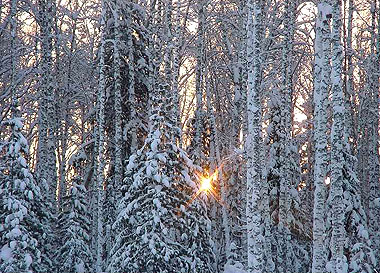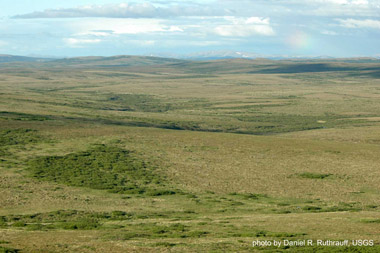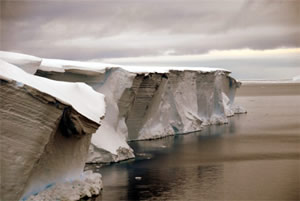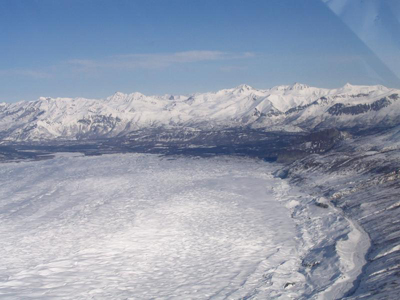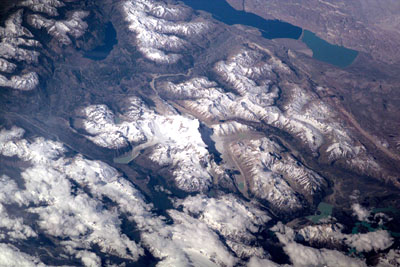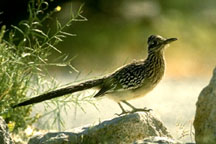Click on image for full size
Image courtesy of Mikhail Dronov of Tomsk in southwestern Siberia
The Taiga Biome
“Taiga” is a Russian word meaning dense evergreen forest. The taiga biome, the largest biome on land, is full of dense evergreen forests. Located just south of the tundra in the northern parts of Europe, Asia, and North America, these forests of conifer trees are also known as boreal forests.
It is very cold and snowy in the taiga during winter, with below freezing average temperatures. During winter it can get as cold as −50°C in the taiga and is typically below freezing. There is a very large temperature difference in winter and summer. While it is not uncommon for temperatures to dive below freezing during the summer as well, it is generally warmer then. During summer the taiga can be as warm to 30°C. Days are long during summer in the taiga, ice thaws, snow melts, and it is often rainy.
The land surface of the taiga was covered with ice until about ten thousand years ago when the glaciers of the last Ice Age retreated. As they melted back, they left the land surface with depressions that have since become small lakes and bogs. Soils have only had a relatively short amount of time to form since the glaciers retreated and so are often thin and they can be nutrient poor because of the cold climate too.
Conifer trees like spruce and fir thrive in this climate. The trees grow close together. This protects them from cold and wind. Their dark color makes their albedo low and they absorb solar energy readily, keeping them a bit warmer. There are a few deciduous tree species that can live in the taiga as well including birch and aspen, but they are not common.
Many animals make their home in the taiga for at least part of the year. Some stay year-round. In the summer, birds and insects are abundant. Many bird species migrate to the taiga and breed and nest there during summer. Other birds, such as sparrows and crows, stay in the taiga year-round. Mammals include herbivores like rabbits and voles as well as carnivores such as lynx, wolverines, and bobcats.


